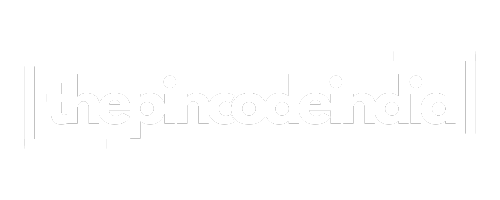In the bustling heart of cities and along the winding paths of highways, a silent revolution in visual communication is unfolding. The static billboards of the past, with their faded colours and unchanging messages, are steadily being replaced by the dynamic, vibrant glow of outdoor LED display screens. These digital canvases are more than just advertising tools; they are powerful communication platforms that are transforming how businesses, communities, and institutions connect with their audiences. From captivating advertisements to critical public alerts, the outdoor LED display screen has become an indispensable asset in our information-saturated world.
An outdoor LED (Light Emitting Diode) display is a large, flat-panel screen composed of thousands of tiny LED modules that act as pixels. When controlled by a sophisticated computer system, these pixels can produce brilliant, high-resolution images and videos that are visible even in direct sunlight. This technology has unlocked a new era of visibility and engagement, offering a suite of advantages that traditional media simply cannot match.
The Unmatched Advantages of Outdoor LED Displays
The shift towards LED technology is driven by a compelling array of benefits that deliver tangible returns on investment.
1. Unparalleled Visual Impact and Attention Command
Human eyes are naturally drawn to light and motion. Outdoor LED screens leverage this instinct, cutting through the visual clutter of the urban environment. With the ability to display millions of colours and high-definition video content, they create an emotional and memorable experience for viewers. A static image of a new car is informative, but a video of that car navigating a scenic coastal road is inspirational. This dynamic capability ensures the message isn’t just seen—it’s felt and remembered, leading to higher brand recall and engagement.
2. Unprecedented Flexibility and Real-Time Communication
This is arguably the most significant advantage. A traditional billboard is locked in for weeks or months, but an LED display is a living, breathing medium. Content can be updated instantly from a central computer or even a smartphone via a cloud-based Content Management System (CMS). This enables:
- Day-Parting: A coffee shop can promote breakfast brews in the morning, lunch specials at noon, and evening pastry deals after work.
- Real-Time Promotions: Businesses can react instantly to current events, weather, or social media trends. A sports bar can display live scores, and a retailer can launch a flash sale during an unexpected heatwave.
- Immediate Campaign Launches: There are no printing or installation delays. A new product or urgent message can be deployed across a network of screens in minutes.
3. Enhanced Creativity and Storytelling Power
The digital canvas liberates creators from the constraints of a single static image. Marketers and communicators can craft mini-narratives, animated graphics, and interactive campaigns. This storytelling ability allows brands to convey complex messages and build a stronger emotional connection with their audience. Furthermore, the ability to integrate live data feeds—such as news tickers, social media feeds, or weather updates—makes the content feel immediate and relevant, fostering a two-way dialogue with the public.
4. Superior Measurability and Return on Investment (ROI)
The age-old challenge of outdoor advertising was proving its effectiveness. Digital displays bridge this gap. While not as precise as online metrics, modern LED networks can be integrated with complementary technologies. Traffic counters, anonymous audience measurement cameras, and the strategic use of QR codes or unique promotional codes provide valuable data on viewership and engagement. This allows for campaign optimization, smarter scheduling, and a clearer demonstration of ROI to stakeholders.
Key Considerations for a Successful Installation
Implementing an outdoor LED display is a significant undertaking that requires careful planning.
- Pixel Pitch and Viewing Distance: The choice of pixel pitch—the distance between the centers of two pixels—is critical. A finer pitch (e.g., P4-P6) is necessary for closer viewing, while a coarser pitch (e.g., P8-P10) is cost-effective for longer viewing distances, like on highways.
- Brightness and Durability: The screen must be bright enough (typically 6,000-8,000 nits) to overcome direct sunlight. It also requires a high Ingress Protection (IP) rating (ideally IP65 or IP66) to ensure it is dust-tight and protected against heavy rain, ensuring reliability in all weather conditions.
- Location and Regulations: The value of a screen is intrinsically tied to its location and visibility. It is also crucial to navigate local municipal regulations and secure the necessary permits before installation to avoid legal issues.
The Future is Bright and Interactive
The evolution of outdoor LED technology is continuous. We are already seeing trends towards higher resolutions (4K and beyond), curved and flexible screens for unique architectural integration, and increased interactivity. Future screens will more seamlessly integrate with personal devices, allowing for hyper-targeted content and immersive experiences that blur the line between the physical and digital worlds.
Conclusion: A Foundational Tool for Modern Communication
The outdoor LED display screen has fundamentally altered the landscape of public communication. It is a tool of immense power and flexibility, offering a blend of visual spectacle, operational agility, and measurable results that static media cannot replicate. For businesses seeking to build a dominant brand, for municipalities aiming to inform their citizens, and for venues looking to enhance the spectator experience, the investment in an outdoor LED screen is a strategic move towards a more dynamic and connected future. It is, without a doubt, the modern megaphone for the digital age.
Frequently Asked Questions (FAQs)
1. How much does an outdoor LED display screen cost?
The cost is highly variable and depends on several key factors:
- Screen Size and Resolution: Larger screens with a finer pixel pitch (higher resolution) are more expensive.
- Location and Installation: Complex installations requiring custom structural engineering will add to the cost.
- Durability Features: Screens with higher brightness and better weatherproofing (IP rating) command a premium.
As a rough estimate, costs can range from tens of thousands to several hundred thousand dollars. It’s best to view it as a long-term capital investment, where the value comes from its advertising revenue potential and brand impact over many years.
2. Who creates the content, and what are the technical requirements?
Typically, the screen owner or advertiser is responsible for content creation, often through an in-house marketing team or a dedicated video production agency. The screen provider will supply a strict set of technical specifications, including:
- Exact Resolution: The native pixel dimensions of the screen (e.g., 1920×1080).
- File Format: Usually video files like MP4 or MOV.
- Aspect Ratio: The proportion of the width to height.
- Maximum File Size: To ensure smooth playback.
Adhering to these specs is crucial for ensuring your content looks sharp and professional.
3. How durable are these screens in harsh weather?
Extremely durable, if you choose a quality product. Commercial outdoor LED screens are engineered to be resilient. Key features include:
- High IP Rating: An IP65 or IP66 rating certifies they are dust-tight and protected against powerful jets of water, making them resistant to rain, snow, and dust storms.
- Robust Materials: They are built with rugged, corrosion-resistant cabinets.
- Environmental Hardening: They include heating and cooling systems to operate efficiently in extreme temperatures, from freezing winters to scorching summers.
4. What is the typical lifespan, and what are the maintenance needs?
The typical lifespan for the LEDs themselves is 100,000 hours—that’s over a decade of continuous operation. This figure refers to the point at which the LEDs’ brightness diminishes to 50% of their original output. Maintenance is relatively low but essential:
- Routine Cleaning: The surface must be periodically cleaned to remove dirt and debris that can dim the brightness.
- Component Monitoring: Power supplies and fans may need replacement before the LEDs themselves.
- Software Updates: Keeping the control software up to date.
A service contract with your provider is highly recommended for proactive maintenance.
5. Are these bright screens a distraction to drivers or a source of light pollution?
This is a valid concern that reputable manufacturers and operators address. Key mitigation measures include:
- Auto-Dimming Technology: Screens are equipped with light sensors that automatically adjust the brightness based on ambient light, reducing glare at night.
- Content Regulations: Most operators have guidelines that prohibit overly flashy, rapidly changing, or pure white content, especially after dark.
- Compliance with Local Laws: Installations must adhere to municipal regulations that govern brightness levels and operational protocols to ensure public safety.


